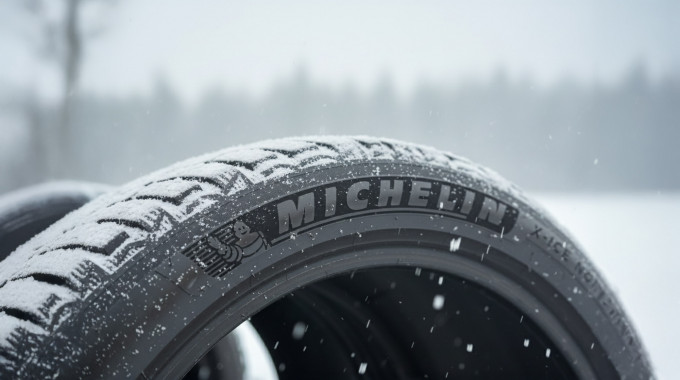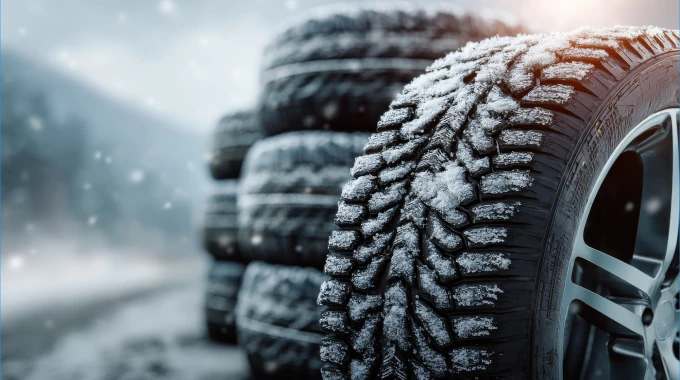
What is My Car’s Trade-in Value? (Black Book vs. Blue Book vs. RedBook)
If you’ve been thinking about shopping around for a new or new-to-you vehicle, there’s one thing you should do before you visit a dealership or view an online listing: You should find out the trade-in value of your current car or truck.
Having that trade-in value in mind while you shop around will help you assess what you can afford. It can help narrow down the price points you should be looking at and ensure you’re not wasting your time looking at the wrong vehicles.
Even if you’re not actively shopping for another vehicle, regularly checking the trade-in value of your current car or truck is a wise habit to get into—especially if you want to optimize the value of the vehicle before it depreciates too much.
So, how do you find your car’s trade-in value? In Canada, there are several online valuation tools anyone can use to find out in a matter of minutes. Three of the most well-known are Canadian Black Book, Canadian Red Book, and Kelley Blue Book. They each offer something slightly different so keep reading to learn more about each tool.
In this article we will review these car value calculator tools, covering the pros and cons of each to help you determine the best method of learning what the current value of your used car is. We will also take a look at some of the other options that are becoming increasingly popular due to their ease of use, no-charge services, and full-service features including being able to calculate the value of your car and sell it without ever leaving your home!
How do dealerships determine trade-in value?
Before we explore the different ways you can find the trade-in value of your vehicle, it’s important to understand how car dealers value trade-ins. The reason? The trade-in values you see through online valuation sites might differ from what dealerships are actually willing to offer you—and it pays to be prepared.
When dealerships accept a car as a trade-in it’s because they want to turn it around and sell it to someone else. In doing so, they want to maximize their profit margin. As such, car dealers will often offer a figure very close to wholesale value, or the low end of any estimated trade-in values you see online—then list the vehicle for sale at a higher price, known as the retail price.
Since their goal is to sell your trade-in quickly and for maximized profits, their offer might depend greatly on whether the make, model, and year of your vehicle is popular with used car buyers, or whether the dealership already has quite a few of the same vehicle on the lot.
For these reasons, if you’re planning to trade-in your vehicle at a dealership it doesn’t hurt to shop around and get quotes from several places, including online retailers. Online retailers (like Canada Drives) are emerging as a convenient alternative when it comes to selling or trading your vehicle, and you may get a better offer for your car from a national retailer—that buys and sells vehicles at scale—compared to a local dealership or even a private party.
The best car value calculator in Canada:
To help save you some time we’ve summarized the most popular car value calculators available online. If you are simply looking for the easiest and quickest way to see what your car is worth you can get a real offer on your car right here in under 2 minutes!
Canadian Black Book
Canadian Black Book has been the standard tool to track the value of vehicles since Black Book vehicle appraisal guides were first established in 1955. It gathers data from a wide range of sources, including provincial sales data, online auctions, and digital listings. Then an expert in-house team analyzes the data on a rolling basis to determine and regularly update vehicle values in their index.
Until recently, you needed to pay a subscription fee to use Black Book, even to look up trade-in values. Today, this tool is entirely free to use for individuals who are looking for their vehicle’s trade-in value.
Finding the trade-in value of your vehicle on Canadian Black Book is simple and only takes a minute:
- Start at the homepage and click on the “Value Your Vehicle” button.
- Input your car’s make, model, year, trim, mileage, and any additional options (such as a sunroof or navigation system).
- Provide your contact details.
- You will be provided a trade-in value. This is the price range you might expect to receive for your vehicle as a trade-in.
In Black Book, you can also look up the average asking price for the vehicle from dealerships. This will give you an idea of how much the dealer might attempt to sell your vehicle for after you trade it in.
Is Canadian Black Book value accurate?
Canadian Black Book (CBB) values are generally accurate and trusted—especially for trade-in and wholesale valuations—but the accuracy depends on how you're using it and what kind of value you're looking for. The Canadian Black Book is used by dealers and financial institutions across Canada for appraisals, lease returns, and financing and is considered to be a trusted source for trade-in values, adjusting for age, mileage, typical value-added features, etc. With that being said, the Canadian Black Book (along with most online car value calculators) does not always consider details such as high demand or rare trims of vehicles or hyper-local pricing differences based on where the vehicle is being sold.
If you are selling your car privately it is best to compare the black book value of your vehicle with the current market value of your vehicle (the private sale retail value) to get the whole picture of what your car is worth. The easiest way to find the private sale retail value of your car is to look online to see what other people in your area are selling similar vehicles for. Remember to consider the age, mileage, and features when comparing your vehicle against others.
Canadian Red Book
Canadian Red Book is powered by CARFAX. It differs from Canadian Black Book in that it’s mostly geared toward dealerships, appraisers, and insurance companies. It requires a hefty annual subscription of $249.99 to access, which makes it less useful for individuals who are simply looking to gauge the trade-in value of their vehicle.
For individuals, CARFAX instead offers their own free online valuation estimator. Similar to Black Book, you can get a trade-in value estimate for your vehicle by providing your car’s make, model, trim, year, and province where you’re located.
What’s helpful about the CARFAX tool is it gives you the option of also requesting a Vehicle History Report, which can provide more detailed information that could impact what the vehicle is worth.
Kelley Blue Book
Kelley Blue Book (also known as KBB) is a relatively new valuation tool in Canada. Like Black Book and CARFAX, it can give you a trade-in estimate once you provide the vehicle’s make, model, year, and trim. You can also view the average asking price for the car and even the average private seller price.
Typically, trade-in value estimates on Kelley Blue Book are a wider range than what you’ll find on Black Book, which can make it more difficult to get a clear sense of what dealerships may offer you. This is all the more true when you consider that Black Book is still the preferred choice of dealerships and retailers.
One key difference is that Kelley Blue Book lets you factor in your vehicle’s condition, listing it as either Fair, Good, Very Good, or Excellent. This requires you to honestly assess your vehicle against Blue Book’s vehicle condition guide, which can be somewhat subjective.
Canada Drives Car Value Calculator
With Canada Drives you can get an instant online value for your used car. Canada Drives combines the Canadian Black Book value with a few additional details about the current condition of the vehicle and details about the interior and exterior to provide a more accurate estimate of your car's value.
The key difference is that the value shown by Canada Drives is also an offer! If you like the value that you see you can choose to sell your car directly to Canada Drives for cash! Once the vehicle details you entered online have been confirmed you can simply drop off the vehicle at a Canada Drives location near you and you will get paid via e-transfer.
Many Canadians are choosing to sell their car to Canada Drives as it is a safe and convenient alternative to selling your car privately. It can take weeks or even months to sell your car privately, while you can sell your car to Canada Drives in under 24 hours. A private sale also requires a lot more effort, having to create the listing, respond to people inquiring about your vehicle, negotiating with strangers, dealing with lowball offers and tire kickers, the list goes on. The extra time and additional stress of selling privately is often not worth it.
If you are looking to sell your car soon, or just curious to know what your car is worth, you can visit our valuation tool to get an instant appraisal (and offer) today.
Things that will affect the value of your trade-in
After you look up the trade-in value of your vehicle, don’t consider it locked in stone. Every dealership will likely use a valuation tool like Black Book as a starting point to assess your vehicle, but they’ll each value your ride differently.
For instance, consider the make (brand), model, and year of your car or truck. If the dealership you’ve taken your vehicle to already has several just like it that haven’t sold in a while, they might not be too eager to offer you top dollar. The current market demand for your vehicle can have a big influence on the current market value. If your vehicle isn’t exciting to consumers, a dealership is less likely to pay anything close to the retail value.
Likewise, you might consider your ride to be in very good or excellent condition but dealerships may feel differently. Even simple cosmetic issues like scratches, scuffs, and tears in the upholstery can lower the trade-in value of your vehicle. Of course, if your car or truck requires any repairs or touch-ups—big or small—that too will impact your potential return. If the vehicle has been in any accidents in the past that will also lower its resale value.
We put together a quick guide to help you improve the value of your vehicle. Read it here: 5 simple ways to boost your car’s worth.
Should I trade my car in or sell it privately?
While selling a car or truck privately will almost always get you more money than trading it in, that extra money does come at a cost. Selling a vehicle privately is time-consuming, requires a lot of detailed planning and documentation, and can even be quite stressful. You also have to schedule and coordinate times for used car shoppers, who may or may not be interested buyers, to view the vehicle and take test drives, and negotiate the final price they are willing to pay. While the private party value of your vehicle can be higher, it may not be with the potential headache.
By contrast, trading your car in is simple. Even if your vehicle isn’t fully paid off yet, dealerships and online retailers make it easy to trade-in your ride and upgrade to a newer one.
Alternatively, if you’re looking for the most convenient way to sell your car without trading it in for replacement, online retailers (such as Canada Drives) are emerging as the most convenient way to sell a car. With an online retailer, you submit a few quick details about your car online to receive an instant offer. If you like the offer all you have to do is drop off your vehicle and get paid. A company like Canada Drives can typically offer you more than most local dealerships too because a retailer markets its vehicles to a much larger audience and therefore can sell it faster.







